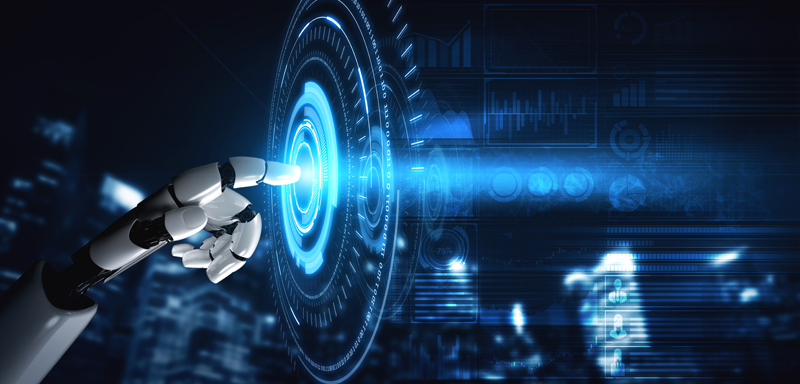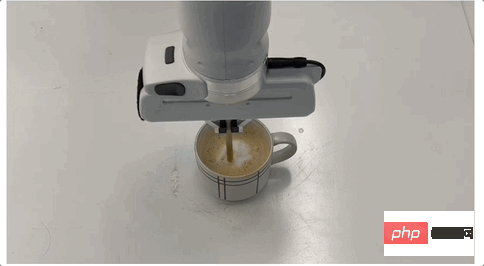In 2023, smart buildings and data-driven construction will continue to revolutionize the industry. In this article, we explore five key trends, innovations and predictions for smart buildings in 2023.

Machine learning also plays an important role in smart construction practices, helping construction teams to construct more efficiently while ensuring quality control. Machine learning algorithms allow controllers to adjust their operations based on data captured from the environment, quickly identifying any potential issues or delays while still optimizing resources. AI-based analytics can also help teams gain insights into project performance and make informed recommendations for better optimization.
In this article, we explore five key trends, innovations and predictions for smart buildings in 2023.
What are the trends in smart buildings?
Smart buildings are changing the way the industry operates and leading to data-driven buildings that are more efficient and more efficient than ever before Economical and safer. In 2023, smart buildings will continue to evolve with technology, enabling on-site and off-site workers to make better decisions while increasing project accuracy and consistency. Here are five current trends in smart buildings, along with future predictions through 2023.
1. Increased use of robots and automation
Construction companies are likely to continue to adopt robots and automation to improve efficiency, reduce labor costs, and improve the accuracy of certain tasks sex and speed.
The use of robotics and automation can have many positive impacts on data-driven construction site practices. Smart building technology can be used to monitor machine performance in real-time and provide detailed analytics that can help inform decisions about project efficiency and schedule. This data can be used to develop more accurate plans for future projects, minimizing delays and reducing costs. Automation can also be used for tasks such as building inspections, enabling faster responses to potential problems and reducing the need for on-site personnel. Ultimately, improving construction site safety by eliminating the physical risks associated with manual labor. By cleverly leveraging robotics and automation technology, data-driven construction projects can benefit from increased efficiency, accuracy and safety.
Additionally, smart building technology can provide valuable insights into a project’s progress that may otherwise be difficult to measure. This information can be used to better understand how certain tasks are performed in the field and ensure that future workflows comply with industry standards.
2. Greater use of data analytics
Construction companies can continue to leverage data analytics to improve decision-making, optimize operations, and identify areas for improvement.
Data analytics can be used to improve nearly every aspect of construction site practices. By collecting data from smart building sites, this data can be analyzed and used to improve accuracy, reduce costs and optimize safety measures. This can make workflows more efficient and shorten project completion times.
Data-driven construction helps create smart building sites by using collected data to monitor and manage safety, environmental impact and project progress. This data is then used to identify any potential issues that need to be addressed to meet deadlines or protect workers from harm. For example, real-time data can be used to track how many people are on site and ensure whether necessary safety equipment is being worn. This data can also be used to optimize construction progress and create more efficient workflows.
Digital construction can also benefit from data-driven practices by providing real-time information on project progress. By tracking performance and progress at each stage, smart construction sites are able to identify areas for improvement and make necessary changes to increase productivity.
3. Widespread Adoption of Virtual Reality and Augmented Reality
Virtual reality and augmented reality technologies may be more widely used in construction tasks such as design reviews and safety training and live visualization.
Virtual reality and augmented reality technologies are considered one of the most promising tools for realizing smart building solutions in the coming years. By integrating virtual models with real-world data, the accuracy and speed of smart building projects can be improved.
Use VR/AR technology to visualize smart building project designs, enabling stakeholders to communicate more effectively than traditional methods. Designers are able to truly immerse themselves in the virtual environment and browse planned projects, allowing them to intuitively understand the overall smart building project design. For example, owners can see what their smart building projects will look like in a virtual environment, visualizing the final results before any construction even begins.
Additionally, VR/AR technology can help reduce errors and avoid costly mistakes in the field by allowing remote collaboration with other smart building stakeholders. Any changes made to a smart building project are instantly visible to all stakeholders, meaning team members are able to stay on the same page with minimal effort. By enabling smart building teams to collaborate quickly and efficiently, VR/AR technology can help significantly speed up smart construction projects.
4. Increasing use of sensor technology
The application of sensor technology is likely to continue to expand, providing real-time data on equipment usage, maintenance needs and project progress.
Using smart buildings and data-driven construction practices enabled by on-site sensor technology can bring many positive impacts to those working in the field.First, real-time data can be used to inform decisions about sites and adjust plans as needed. Sensor readings enable project managers and engineers to receive continuous feedback about conditions, allowing for more accurate forecasting and planning. This data can also be used to analyze and detect potential issues, leading to more proactive problem-solving strategies.
Additionally, smart buildings can improve job site safety by providing early warning when hazardous conditions are detected. Additionally, sensors can track worker activity, thereby increasing accountability and safety compliance. This ensures tasks are completed in a timely manner and with attention to detail.
Finally, smart building sites can increase efficiency by providing more data-driven insights into project progress. Field sensors can provide detailed readings on key metrics such as material usage, machine performance and labor productivity. This allows us to identify areas where productivity can be improved, resulting in more efficient and cost-effective project results.
5. Increased integration of smart devices and systems
Construction companies will likely continue to integrate smart devices and systems, such as smart thermostats and smart lighting, into their projects to improve energy efficiency and reduce operating costs.
Smart buildings, also known as digital or data-driven buildings, are the integration of smart devices and systems with modern project management techniques to improve safety, efficiency and sustainability on site. Traditional construction practices are manual processes that are time-consuming and prone to human error. Smart buildings help alleviate these issues by providing real-time access to building site data and automating processes to monitor safety, quality and progress.
For example, smart buildings can be used to track materials on a construction site, recording what has been delivered and when it was used. This allows for better management of supplies and reduces waste due to over-purchasing or under-stocking of supplies. Additionally, smart buildings can be used to quickly and accurately monitor project progress. With real-time access to data, project managers can make faster, more informed decisions about how to manage resources and adjust schedules.
Looking ahead
As we enter 2023, the construction industry is undergoing a transformation due to the combination of smart buildings and data-driven technologies. By leveraging AI-enabled solutions such as machine learning algorithms, digital twins of projects, sensors, and more, project outcomes are improved while reducing costs, increasing safety, and optimizing resources. The future of smart building practices looks very bright as it continues to raise efficiency standards across the board.
The above is the detailed content of Smart Buildings in 2023: Five Trends and Future Forecasts. For more information, please follow other related articles on the PHP Chinese website!
 到2028年,智能建筑AI市场规模预计达64.8亿美元Apr 11, 2024 pm 07:31 PM
到2028年,智能建筑AI市场规模预计达64.8亿美元Apr 11, 2024 pm 07:31 PM这项新研究以人工智能(AI)市场分析为基础,着眼于人工智能的广泛能力及其专业应用所取得的进展,这些应用使建筑环境更加智能、更加可持续、响应速度更快。这是两部分系列报告中的第一部分,第二部分关于人工智能市场格局的报告将于今年晚些时候发布。该报告探讨了我们在迈向“真正认知建筑”的道路上所处的位置。当今的商业建筑技术正在从基于规则的分析转向人工智能预测机器学习模型,但采用率仍处于中等水平。现实世界的部署范围仍然很窄,主要是由能源优化、空间利用和安全方面更易于理解的用例所驱动。阻碍人工智能应用的挑战禁碍
 拿破仑、孔子在线陪聊!AI聊天机器人「复活」历史名人,网友:真上头!Apr 08, 2023 pm 12:11 PM
拿破仑、孔子在线陪聊!AI聊天机器人「复活」历史名人,网友:真上头!Apr 08, 2023 pm 12:11 PM和活生生的已故历史名人聊天是个什么感觉?近日,就有一群开发者利用语言模型,把千百年来各行各业的历史名人全部「复活」成了聊天机器人,做进了一款手机app里,起名叫「你好,历史」!开发者声称,这个与古代名人聊天的app涉及的内容几乎无所不包。比如可以:与玛丽莲·梦露聊好莱坞八卦与弗里达·卡洛讨论现代艺术问问圣诞老人他有多少只驯鹿问问科特·科本为什么自杀向穴居人学习如何生火与宇宙意识辩论生命的意义不过他们也没忘记提醒用户,这些对话是由人工智能生成的,所以不要太认真。而且每个对话都是独一无二的,你永远不
 2024年AEC/O行业五大发展趋势Apr 19, 2024 pm 02:50 PM
2024年AEC/O行业五大发展趋势Apr 19, 2024 pm 02:50 PMAEC/O(Architecture,Engineering&Construction/Operation)是指是建筑行业中提供建筑设计、工程设计、施工及运营的综合服务。2024年,AEC/O行业在技术进步中面临着不断变化的挑战。今年预计将整合先进技术,预示着设计、建造和运营的范式转变。为了应对这些变化,行业正在重新定义工作流程,调整优先级,增强合作,以适应快速变化世界的需求。AEC/O行业以下五大趋势将成为2024年的关键主题,推荐其走向更加一体化、响应迅速和可持续的未来:一体化供应链、智能工
 未来的建筑:智能建筑技术趋势和预测May 15, 2023 pm 09:58 PM
未来的建筑:智能建筑技术趋势和预测May 15, 2023 pm 09:58 PM随着我们的世界不断发展,构成我们城市景观的建筑也在不断发展。随着技术的进步和对可持续性的日益关注,建筑设计的未来有望实现更智能、更高效、更环保的结构。本文探讨了智能建筑技术的主要趋势和预测。这些创新将塑造我们在未来建筑中生活和工作的方式。物联网设备和系统的集成物联网(IoT)已成为智能建筑技术的基石,可实现各种设备和系统的无缝集成。未来的建筑将越来越依赖物联网技术来优化能源管理、监控设备性能并提高居住者的舒适度。关注能源效率和可持续性能源效率和可持续性将处于未来建筑设计的前沿,人们越来越重视减少
 盘点全球不错的七所机器人工程专业学校Apr 08, 2023 pm 01:31 PM
盘点全球不错的七所机器人工程专业学校Apr 08, 2023 pm 01:31 PM有抱负的工程师应该了解世界各地著名的机器人工程学院。现在是从事机器人和工程事业的最佳时机——从人工智能到太空探索,这一领域充满了令人兴奋的创新和进步。美国劳工统计局估计,未来10年,机械工程领域的职业总体上将保持7%的稳定增长率,确保毕业生将有大量的就业机会。机器人工程专业的学生平均工资超过9万美元,无需担心还助学贷款的问题。对于那些考虑投身机器人工程领域的人来说,选择一所合适的大学是非常重要的。世界上许多顶尖的机器人工程学院都在美国,尽管国外也有一些很棒的项目。这是7所世界上最好的机器人工程学
 酒店中的五大AI用例:改善客户体验和效率Mar 22, 2024 pm 03:11 PM
酒店中的五大AI用例:改善客户体验和效率Mar 22, 2024 pm 03:11 PM作者:Hotelogix首席执行官兼联合创始人AdityaSanghi酒店业面临日益激烈的竞争和客人偏好的快速变化,这促使酒店必须利用最新技术来与众不同。人工智能(AI)作为新时代的技术之一,正在逐渐应用于酒店行业。与其他技术解决方案一样,人工智能有助于提升酒店的客户体验和运营效率。通过AI,酒店可以更好地了解客人的需求,提供个性化的服务,并优化运营流程。AI技术的引入将为酒店带来更多发展机遇,帮助其适应不断变化的市场环境,提高竞争力。以下是将在2024年及以后重新定义酒店业未来的五大人工智能用
 让机器人学会咖啡拉花,得从流体力学搞起!CMU&MIT推出流体模拟平台Apr 07, 2023 pm 04:46 PM
让机器人学会咖啡拉花,得从流体力学搞起!CMU&MIT推出流体模拟平台Apr 07, 2023 pm 04:46 PM机器人也能干咖啡师的活了!比如让它把奶泡和咖啡搅拌均匀,效果是这样的:然后上点难度,做杯拿铁,再用搅拌棒做个图案,也是轻松拿下:这些是在已被ICLR 2023接收为Spotlight的一项研究基础上做到的,他们推出了提出流体操控新基准FluidLab以及多材料可微物理引擎FluidEngine。研究团队成员分别来自CMU、达特茅斯学院、哥伦比亚大学、MIT、MIT-IBM Watson AI Lab、马萨诸塞大学阿默斯特分校。在FluidLab的加持下,未来机器人处理更多复杂场景下的流体工作也都
 深入浅析,一步步用GPT打造你的聊天机器人Apr 07, 2023 pm 07:41 PM
深入浅析,一步步用GPT打造你的聊天机器人Apr 07, 2023 pm 07:41 PM与ChatGPT聊天很有趣,而且信息量很大 —— 与它闲聊可以探索一些新的想法。但这些都是比较随意的用例,新奇感很快就会减弱,特别是当人意识到它能产生幻觉的时候。如何以更高效的方式使用ChatGPT呢?在OpenAI发布GPT3.5系列API后,可以做的事情远不止是闲聊。QA(问答)是企业和个人使用的一个非常有效的用例 —— 用自然语言向机器人询问自己的文件/数据,它可以通过从文件中检索信息并生成回应来快速回答。可以把它用于客户支持、综合用户研究、个人知识管理等等。向机器人询问与文件相关的问题。


Hot AI Tools

Undresser.AI Undress
AI-powered app for creating realistic nude photos

AI Clothes Remover
Online AI tool for removing clothes from photos.

Undress AI Tool
Undress images for free

Clothoff.io
AI clothes remover

AI Hentai Generator
Generate AI Hentai for free.

Hot Article

Hot Tools

Dreamweaver CS6
Visual web development tools

ZendStudio 13.5.1 Mac
Powerful PHP integrated development environment

MinGW - Minimalist GNU for Windows
This project is in the process of being migrated to osdn.net/projects/mingw, you can continue to follow us there. MinGW: A native Windows port of the GNU Compiler Collection (GCC), freely distributable import libraries and header files for building native Windows applications; includes extensions to the MSVC runtime to support C99 functionality. All MinGW software can run on 64-bit Windows platforms.

VSCode Windows 64-bit Download
A free and powerful IDE editor launched by Microsoft

Dreamweaver Mac version
Visual web development tools






